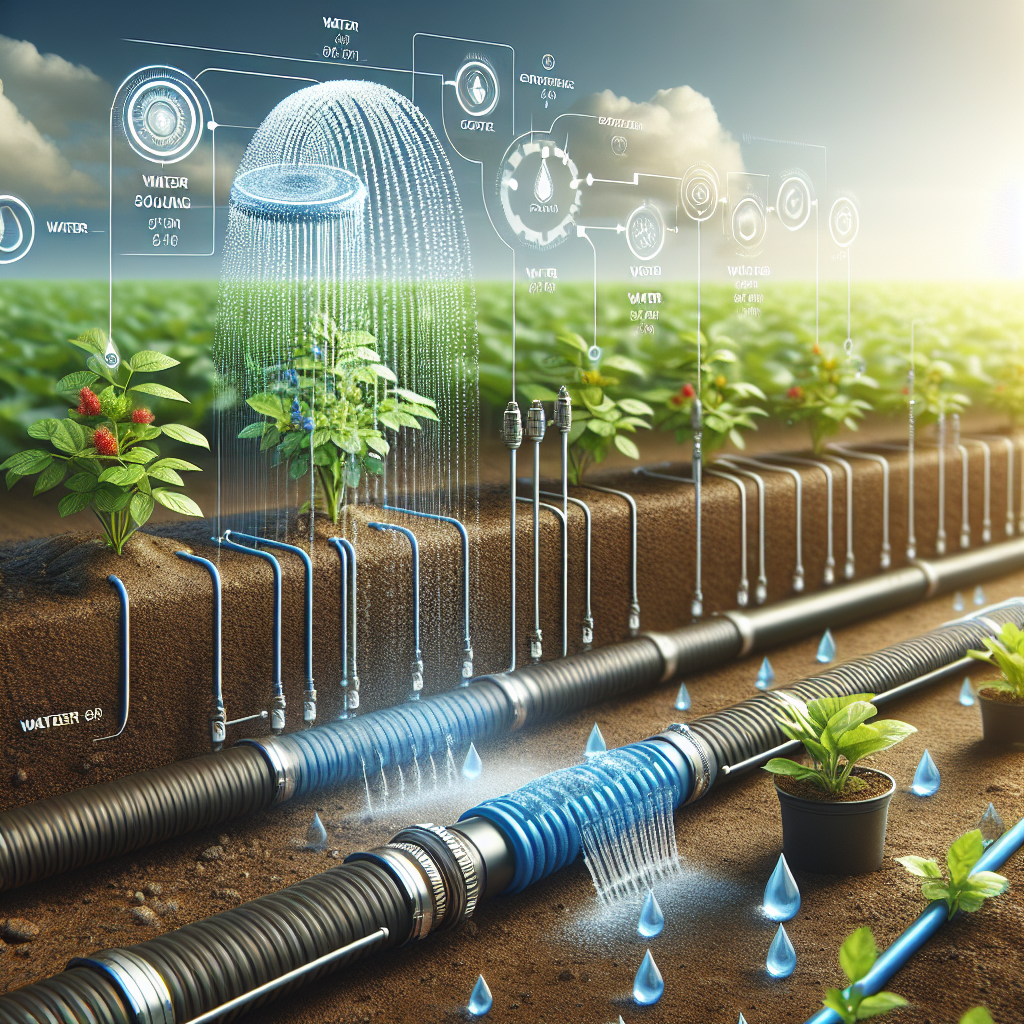Unveiling the Secrets of Efficient Slow Drip Irrigation Systems
Introduction
Irrigation is an essential practice in agriculture to ensure the consistent supply of water to plants. One popular method of irrigation that has gained popularity in recent years is slow drip irrigation systems. These systems deliver water directly to the roots of plants at a slow and steady rate, minimizing water wastage and maximizing efficiency. In this article, we will delve into the secrets behind efficient slow drip irrigation systems and how they can benefit farmers.
What is Slow Drip Irrigation?
Slow drip irrigation is a method of delivering water directly to the roots of plants through a network of tubes or pipes with emitters that release water slowly and evenly. This method ensures that plants receive a consistent supply of moisture, which is essential for their growth and development.
One of the key advantages of slow drip irrigation systems is their efficiency in water usage. Unlike traditional sprinkler systems that can lose significant amounts of water due to evaporation and runoff, slow drip irrigation delivers water directly to where it is needed most – the roots. This results in minimal wastage and maximizes the effectiveness of each drop of water.
Components of Slow Drip Irrigation Systems
A typical slow drip irrigation system consists of several key components:
1. Water source: This can be a reservoir or a tap connected to a main water supply.
2. Mainline: A pipe that carries water from the source to the distribution lines.
3. Distribution lines: Tubes or pipes that carry water from the mainline to various sections of the field or garden.
4. Emitters: Devices attached to distribution lines that release water slowly and evenly.
5. Filters: To remove any debris or particles from the water before it reaches the emitters.
6. Pressure regulators: To control the flow rate and ensure uniform distribution of water.
Tips for Efficient Slow Drip Irrigation
Now that we have discussed the components of slow drip irrigation systems, let’s delve into some secrets for ensuring their efficiency:
1. Proper planning: Before installing a slow drip irrigation system, it is important to plan out your layout carefully. Consider factors such as plant spacing, soil type, and slope to determine where emitters should be placed for optimal coverage.
2. Use quality components: Investing in high-quality pipes, emitters, filters, and pressure regulators will ensure that your system operates efficiently and lasts longer.
3. Monitor soil moisture: Regularly monitor soil moisture levels using a moisture meter or by checking the soil with your hands. Adjust watering schedules accordingly to prevent overwatering or underwatering.
4. Mulch: Applying mulch around plants helps retain moisture in the soil and reduces evaporation, making your slow drip irrigation system even more efficient.
5. Regular maintenance: Inspect your system regularly for leaks, clogs, or damaged components. Replace any faulty parts promptly to prevent water wastage.
Benefits of Slow Drip Irrigation
There are numerous benefits associated with using slow drip irrigation systems:
1. Water conservation: Slow drip irrigation minimizes water wastage through evaporation and runoff, making it an environmentally friendly option for farmers looking to conserve this precious resource.
2. Improved plant health: By delivering water directly to plant roots, slow drip irrigation promotes healthier root development and reduces stress on plants caused by fluctuating soil moisture levels.
3. Weed control: Because slow drip irrigation only waters where it is needed (at plant roots), there is less chance for weeds to germinate and thrive compared to traditional sprinkler systems that wet entire areas indiscriminately.
4.Cost-effective: While initial installation costs may be higher than traditional sprinkler systems, over time savings on water usage can offset these expenses making slow-drip irrigation more cost-effective in the long run.
Conclusion
In conclusion, efficient slow drip irrigation systems offer numerous benefits for farmers including reduced water wastage improved plant health ,weed control ,and cost-effectiveness . By following our tips ,investing in quality components ,and regular maintenance you can maximize these benefits finally helping you achieve Optimal crop yields .Consider installing a-slow-drip-irrigation system on your farm or garden today!














